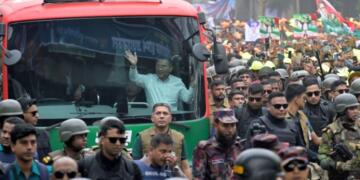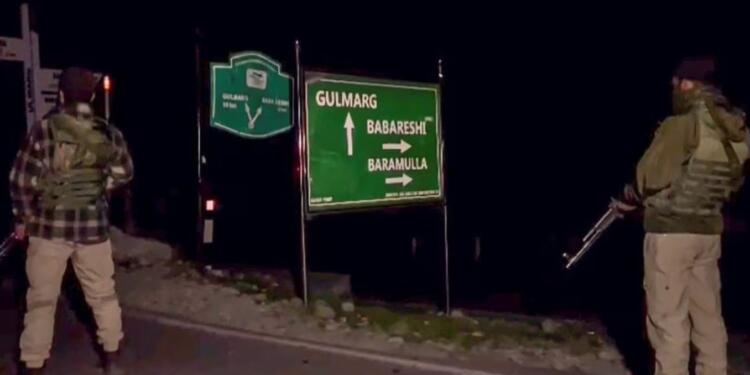The landscape of the prominent tourist destination Gulmarg, located in Jammu and Kashmir province looked ugly on October 24, 2023, as it was a spot for a terrorist attack. Those behind this terrorist attack were reportedly claimed to be from People’s Anti-Fascist Front, an offshoot of the notorious group Jaish-e-Muhammad or JeM. Five people were killed out of this attack, of which two were Indian army soldiers and the other two were civilian porters, one Indian Army soldier injured later succumbed to injuries.
Tactics and implications of the attack
The attack was a direct attack on an army vehicle at Botapathri where terrorists used an M-4 automatic weapon and an AK-47. In one video posted in social media, it could be seen how a terrorist fired a rocket from a dense forest at the vehicle. While the rocket missed the target, the officials drew attention to the fact that if it had hit, then the consequence would have been disastrous. This marks a worrisome evolution in tactics, raising questions regarding the sophistication and support behind these groups.
A serious issue is the involvement of the Pakistani army. With advanced weaponry, many analysts are questioning whether these terrorists are receiving logistical and material support from state actors. The long history of cross-border terrorism in the region suggests a complex relationship between militant groups and the Pakistani military.
Foreign Interference: Arms Left in Afghanistan
During the rush of US withdrawal from Afghanistan in 2021, a humongous arms cache and ammunition were left behind. There have been reports that many such arms, from high-tech firearms to military-grade equipment, may be finding their way into the hands of terror organizations, even through possible connivance with the Taliban. The supply of arms could be an avenue through which the Taliban might sell arms to the PAFF and other such groups, thereby perpetuating instability in the neighboring nations, including India.
This situation bears some historical precedents, such as the Kabyali raids of 1947, where armed groups entered Jammu and Kashmir with the tacit support of the Pakistani military. The similarities between then and now raise very alarming questions: Is Pakistan resorting to its old tactics of using non-state actors to further its geopolitical agenda? Could there be an organised effort to revive the insurgency in Kashmir?
Kabyali raids and today
In 1947, Kabyali tribesmen invaded Kashmir for decades with the help of Pakistani army invasion. The similarities with current affairs are quite striking. Modern weaponry, foreign fighters, and organized groups point toward repeating history. The question here is: Are we in the midst of a new generation of Kabyalis being mobilized with the help of foreign powers?
The Afghan Connection
The attack on the army vehicle also throws into disturbing light the connections linking modern-day terrorists with Afghanistan. Many of the militants who have orchestrated some of the recent attacks in Jammu and Kashmir have been traced to have links with outfits operating in Afghanistan. Such fluidity makes borders porous, allowing fighters and resources to move about -leaving much to be done and undone in counter-terrorism efforts.
Foreign fighters, especially from disturbed regions, may be only a part of a strategy designed by the groups back in Afghanistan. They enter with combat experience and training, which raises the stakes dramatically for security forces in Kashmir.
Who’s Behind Funding Terrorism?
A natural question the situation brings about is related to mechanisms of financing these terrorist operations. Who finances groups like the PAFF? Questions arise with claims that part of the funding originated from abroad possibly by criminal groups, possibly organised crime networks or drug trafficking, or even state patronage. In such a case, international cooperation in counter-terrorism becomes inevitable.
Terrorism lives on resources, and this understanding of resources is the key to breaking up the networks. Analyses of terrorism financing may uncover very important links that connect local-level warfare with global terrorist financing.
A Call for Vigilance
The Botapathri attack reminds one of the grim threat of terrorism to Jammu and Kashmir, involving sophisticated weaponry, historical analogies, and possible foreign support. These, of course, are critical questions for security in the region in the days ahead.
It has implications way beyond the tragic immediate disaster; as security forces build their efforts in tracking the perpetrators, this is an apparent wake-up call to vigilance, strategic counter-terrorism actions, and international cooperation in tackling this very pervasive danger called terrorism. History is made a teacher of modern tactics and the stakes in an ever more complex landscape that’s becoming increasingly fast-evolving.































